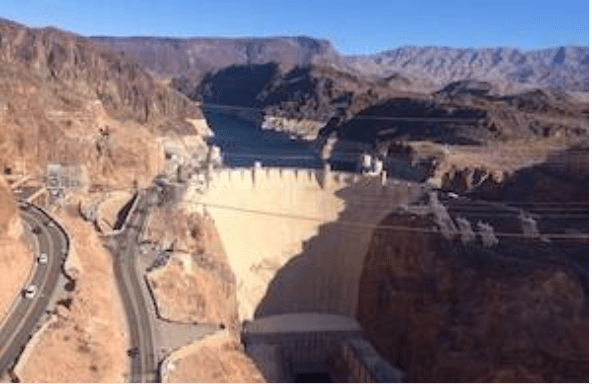It’s been more than 80 years since President Franklin D. Roosevelt dedicated Bolder Dam, which was renamed Hoover Dam more than decade later. The dam was built primarily to control water flow along the Colorado River and provide a dependable supply of water for Southern California and Arizona. It was, however, also the largest hydroelectric facility in the U.S. when it was dedicated in 1935. Still today, Hoover Dam remains one of the largest sources of hydropower—a.k.a. clean, renewable power—in the U.S., as well as one of the greatest engineering feats in modern history.
If you mention the Hoover Dam tour to the 40 plus Power-Gen attendees who braved a cold, blustery morning (at least by Nevada standards), most will likely tell you it was worth the near one-hour bus ride from Las Vegas to visit the site. While this year’s Hoover Dam tour didn’t turn out exactly as planned because the elevators that carry visitors 57 floors down into the dam for the two plus hour tour were out of service, it was still a wonderful place to spend the morning.
For obvious reasons, the tour guides did not give us the option of using the stairs to visit the tunnels, turbine deck and other sites inside the dam, but instead provided a “tour” of the mammoth facility with the aid of a film and slide show.
Attendees learned about the dam’s technical specifications, including the fact that the 2,080-MW power plant is operated by the Bureau of Reclamation. Its 17 main Francis turbines are located more than 500 feet below the top of the dam. Eight of those turbines are on the Nevada side of the plant and nine are on the Arizona side. The last turbine-generator set was installed in 1961, and an uprate project was completed in 1993. The water reaches the turbines through four penstocks—two on the Arizona side of the plant and two on the Nevada side. Another interesting tidbit about the dam is that even though it is in both Nevada and Arizona, it is operated from one control room and, because Arizona does not participate in daylight savings time, the plant is operated on Nevada time.
The tour guide explained that the operators must walk a fine line between regulating water flow/reservoir levels and producing electricity. Even though it is a clean generator with free fuel, this balancing act means that Hoover Dam is not necessarily the first power plant to be dispatched. Never the less, the plant still generates more than 4 billion kilowatt hours of electricity per year.
I could share many more technical facts about Hoover Dam, but anyone who wants to know more can find a lot about the dam’s technical specifications on its website. You certainly don’t have to visit in person to learn about it. But, like many other famous landmarks and wonders of the world, it’s hard to imagine just how magnificent the facility is until you see it in person.
As I heard about its history this morning, I couldn’t help but be somewhat inspired. There is much more to the story than just the technical accomplishments. Planning for this 80-year-old federal government project began 20 years before the first boulder was blasted out of the mountainside to begin construction. It was planned before the stock market crash that resulted in the Great Depression and yet the visionaries, including President Herbert Hoover and many others, still moved it forward. The dam represents the ability for those with a common vision to overcame political differences, uncertain economic times, financial struggles and massive engineering and construction difficulties because they believe the greater good far outweighs the challenges.
I expect Hoover Dam will continue to provide clean water and electricity to millions of people for years to come, as well as inspiration to many who take the time to learn about its history.










